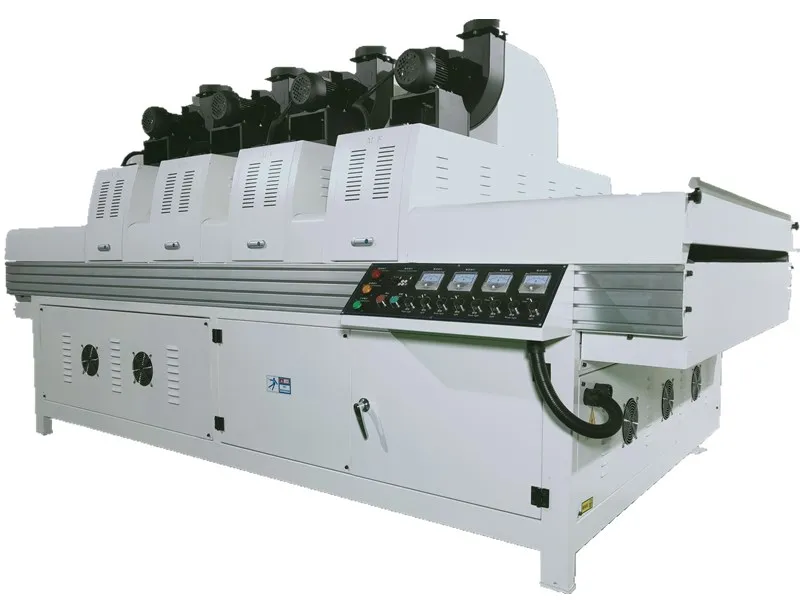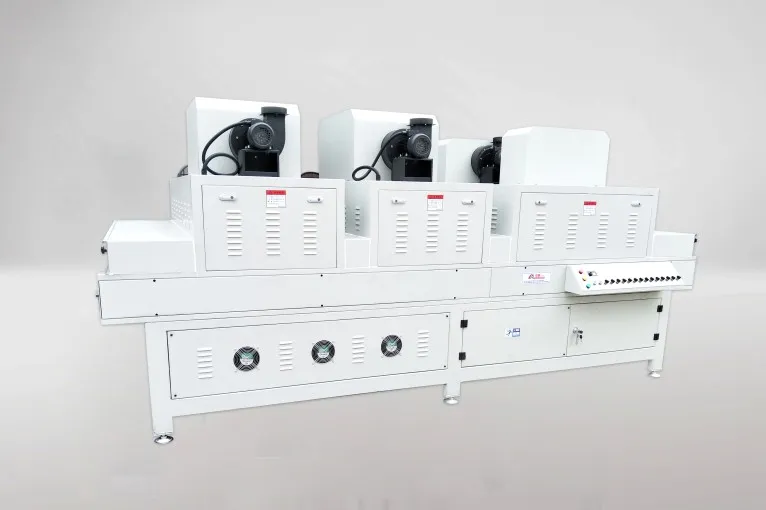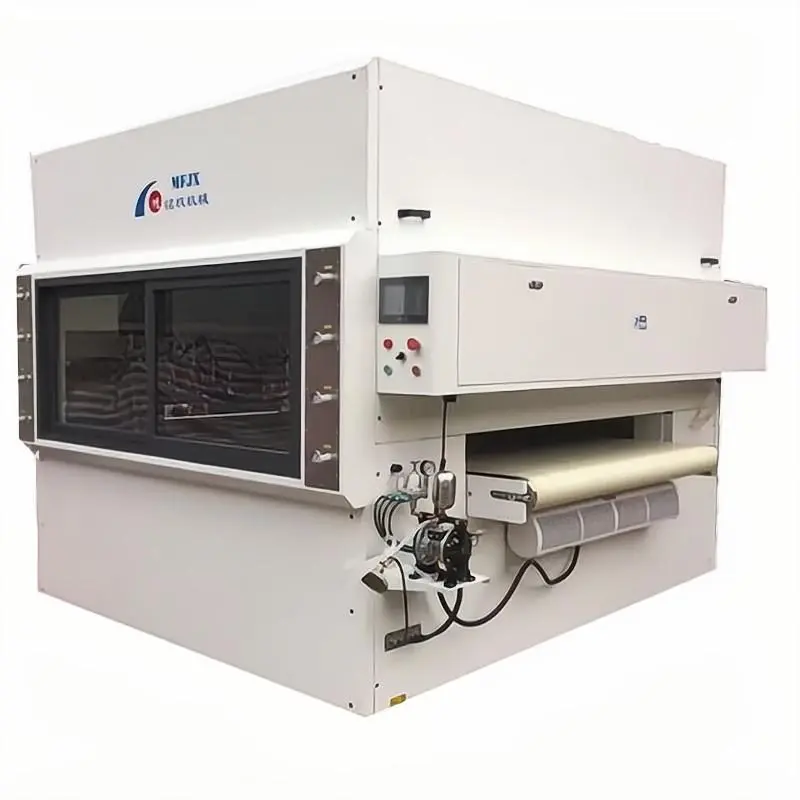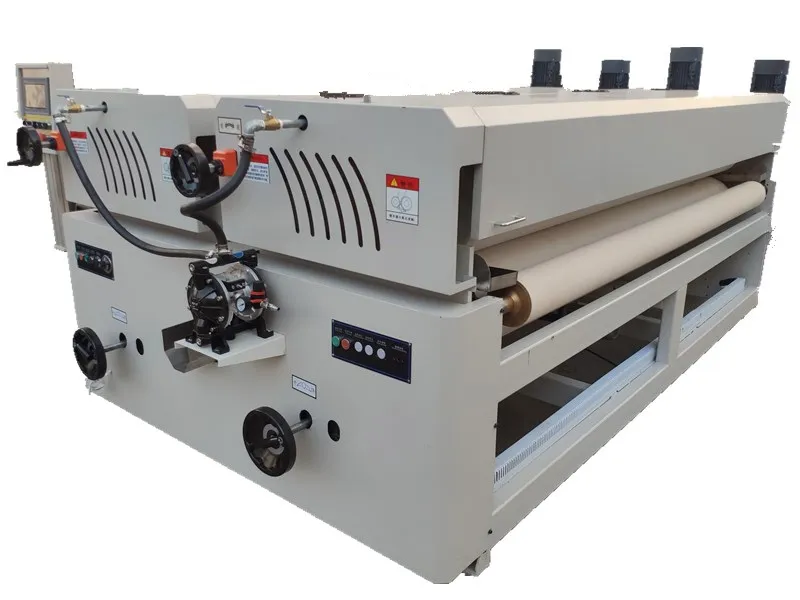
Wood UV coating is a UV-curing coating containing a photoinitiator. After application to the wood surface, UV radiation (for example, using a wood UV drying machine) triggers rapid polymerization and instant film formation.
Unlike traditional solvent-based coatings, 100% UV solvent-based or 100% solid UV coatings emit virtually no VOCs during the curing process, cure extremely quickly, and provide excellent coating properties (high hardness, scratch resistance, and chemical resistance).
Below, I'll explain the process details, equipment parameters, common problems, and inspection methods for each step, including "what it is," "why it's used," and "how it's applied," to help you implement it on your production line or evaluate supplier solutions.
The Nature and Types of Wood UV Coating (What is it?)
Wood UV coating is a coating system based on a photopolymerizable resin. Its main components include: acrylates/oligomers, a reactive monomer diluent, a photoinitiator, functional additives (leveling agents, defoamers, antioxidants), and pigments or fillers (in the case of a basecoat or sealer). Under UV light, photoinitiators absorb light energy to generate free radicals or cations, initiating crosslinking between monomers and oligomers, transforming the liquid state into a solid crosslinked network in a very short time.
By system classification, they can be:
• 100% solid UV coatings: Solvent-free, with a solids content close to 100%, environmentally friendly, fast-drying, and commonly used in industrial mass production.
• Water-based UV coatings: Using water as a medium, they combine low volatility with a certain degree of environmental friendliness, requiring a special formulation for UV curing.
• UV-curable oil-modified acrylic or polyurethane acrylates: Excellent performance, with good abrasion and chemical resistance.

Why choose UV coating for wood painting?
• Instant cure: Curing is completed in seconds to tens of seconds using a wood UV drying machine, resulting in high production capacity and reduced process waiting time.
• Low VOC/environmental: 100% solid UV coatings, in particular, use virtually no volatile solvents, resulting in extremely low emissions.
• Excellent coating film performance: High surface hardness, scratch resistance, chemical resistance, and weather resistance (depending on the formulation).
• Beautiful film: Achieve various glosses (matte, glossy) and fine decorative effects.
• Automation integration: Suitable for in-line production with automated spray lines, roller coating machines, and wood UV drying machines.
What are the key steps in applying UV coating to wood?
• Substrate preparation: Drying and moisture content control → Sanding → Cleaning and dust removal
• Sealing/priming (if necessary): Fill wood pores, provide a uniform base coat, and improve sealing properties
• UV coating application: Can be done using an automatic spraying machine, roller coating machine, flow coating, or roller coating
• UV curing: Pass the coated workpiece through a wood UV drying machine for exposure and curing at appropriate irradiance and energy density
• Inspection and post-processing: Inspect surface feel, hardness, adhesion, gloss, and other indicators; sand and re-coat as necessary
The following details the key points and common specifications for each step
1. Substrate Preparation (Prerequisite for Successful Curing)
• Moisture Control: The moisture content of the wood should be stable and compatible with the environment. A typical requirement for furniture and wood products is approximately 8–12% (adjusted by product and region). Excessively high moisture content can lead to oil release, bubbles, or later cracking; excessively low moisture content can cause cracking or adhesion issues.
• Sanding: Sanding is performed in two or more passes of coarse and fine sanding. A common sequence is 80–120 grit → 180–220 grit → a final 240–320 grit (varies depending on the wood and finish requirements). The grit of the final sandpaper and whether deburring is necessary are crucial to maintain a uniform surface roughness for better adhesion.
• Cleaning and Dust Removal: Use a vacuum cleaner, ionizer, or tack cloth to thoroughly remove dust. Dust and oil stains can severely affect the adhesion and smoothness of the UV coating.
• Sealing/Primering: For wood with significant open pores (such as oak), first treat with a sealer or primer to fill the pores and prevent "wood grain popping" or leveling issues on the paint surface.
2. Selecting and Mixing the Paint (Formulation and Pretreatment)
• Confirming the Paint Type: Determine whether to use a 100% solids UV (solvent-free), water-based UV, or solvent-curable formulation (the latter is less common in 100% UV environments).
• Spectral Matching: If using an LED-UV light source, confirm that the photoinitiator in the paint responds to the LED wavelength (e.g., 365/385/395/405 nm); if using a mercury lamp (medium-pressure mercury lamp), the paint must absorb within this wavelength range.
• Viscosity and Filtration: Paints may need to be diluted or their viscosity adjusted at the factory to suit spray guns or roller coating equipment. All paints must be filtered through a fine mesh (e.g., 100–200 mesh) before application to the machine to prevent particles from clogging the spray nozzle or causing surface defects.
• Storage and Mixing: Stir thoroughly before use according to the manufacturer's recommendations to avoid photoinitiator precipitation or pigment separation.
Comparison of Main Coating Methods (How to Apply the Paint?)
1. Automatic Spraying Machine (Including Reciprocating and Robotic)
• Advantages: Suitable for irregular shapes, corners, and three-dimensional parts; good spray uniformity; easy to integrate with CNC automation.
• Disadvantages: Lower paint utilization than contact coating; requires good recovery and exhaust.
2. Roller Coating Machine / Roller/Scrape Coating Before Drying Line
• Advantages: High efficiency for flat parts such as flat door panels; high paint utilization and consistent thickness.
• Disadvantages: Not suitable for complex curved surfaces or grooved details requiring subsequent touch-up.
3. Leveling (Flowing) Coating vs. Scrape Coating
• Suitable for high-gloss surfaces and surfaces requiring excellent leveling, but requires high process control.
4. Spot or Manual Touch-Up
• Often used after the automatic coating line for touch-up of edges, corners, or decorative details.
In mass production, it's common to combine automatic spraying machines with roller coating machines according to process steps: for example, primer/sealer coating is performed using rollers, while topcoat is applied automatically using sprays to ensure both aesthetics and edge finish.

Wood UV Drying Machine: The Key to Curing (How Does It Cure?)
Wood UV drying machines are the core equipment for UV coating curing. Key parameters and control points include:
1. Light Source Type: LED-UV vs. Medium-Pressure Mercury Lamp
• LED-UV: Narrow spectrum, high energy efficiency, long life, and minimal thermal impact, suitable for heat-sensitive substrates and coatings compatible with photoinitiators.
• Medium-Pressure Mercury Lamp: Broad wavelength and strong penetration, suitable for coatings with high opacity or non-LED compatibility, but thermal load and ozone issues must be controlled.
When selecting a light source, always refer to the paint manufacturer's recommended spectrum.
2. Irradiance (mW/cm²) and Energy Density (Dose, J/cm²)
Irradiance determines the light intensity per unit time; dose (irradiance × time) determines the actual energy input. Coating manufacturers typically specify a required dose range (e.g., 0.5–3.0 J/cm², depending on the formulation).
• Calculation formula: Exposure time (s) = Required dose (J/cm²) ÷ Measured irradiance (W/cm²). This is typically achieved on the production line by adjusting conveyor speed and lamp power.
3. Light Uniformity and Lamp Distance
The distance between the lamp and the workpiece affects irradiance distribution; reflectors, lenses, and light bar arrangement can affect lateral uniformity. A radiometer must be used to measure and optimize the distribution to ensure uniform cure across the entire panel surface.
4. Oxygen Inhibition and Nitrogen Exchange
Free radical polymerization systems can be inhibited by atmospheric oxygen, resulting in surface tack or defects. For surfaces requiring high gloss or hardness, nitrogen shielding (nitrogen exchange) can be used to reduce oxygen inhibition, thereby reducing surface tack and improving gloss and solvent resistance.
5. Thermal Management (Cooling)
Wood UV drying machines require air or water cooling (depending on the lamp source) to ensure controlled temperature rise and prevent warping of the wood or thermal deformation of the coating.
6. Typical Curing Time
For thin films (typical topcoats), exposure times on industrial wood UV drying machines are typically in the 1–10 second range (depending on irradiance and dose); thick films or opaque colors may require higher doses or multiple passes. Always set the dose based on the recommended coating dose and on-site measurements.
Quality Inspection and Acceptance Criteria (How to Determine "Applied Well")
Common inspection items include:
• Tack Test: Surface tackiness is only a preliminary assessment.
• Solvent Rub (MEK or IPA Rub): A double rub test tests solvent resistance and cure depth.
• Hardness Test: Pencil hardness, pendulum hardness, or pencil sharpener scratch.
• Adhesion Test: Cross-hatch test or pull-off method (performed according to the standard).
• Film Thickness Measurement: For non-magnetic materials, dry film thickness can be estimated using optical or weight difference methods.
• Gloss Measurement: Appearance can be assessed using a 60° or 20° gloss meter.
• Appearance Inspection: Check for defects such as leveling, orange peel, pinholes, yellowing, and cracking.
These tests can determine whether a batch of UV wood coatings meets process and quality requirements.
Common Faults and Troubleshooting (Common Problems with Poor Performance)
• Surface Tackiness/Incomplete Curing: Causes include insufficient dosage, irradiance attenuation, spectrum mismatch, or excessive coating thickness. Countermeasures: Increase dosage or reduce film thickness, check lamp intensity, or replace lamps.
• Yellowing/Poor Color: Caused by overheating, inappropriate photoinitiators or additives, or oil release from the substrate. Countermeasures: Reduce heat (use LEDs or increase cooling) and adjust the formulation.
• Blistering/Pinholes: Caused by outgassing, moisture, or excessive heating of the wood. Countermeasures: Control moisture content, pre-dry, apply in layers, or reduce initial irradiation intensity.
• Poor leveling/orange peel: Improper spray parameters or viscosity control; Countermeasure: Adjust atomization pressure, viscosity, or spray distance.
• Poor adhesion: Surface contamination or poor sanding; Countermeasure: Re-sand, clean, or use an appropriate primer.
Conclusion: "What is UV coating for wood, and how is it applied?"
Summary answer: UV coating for wood is a high-performance coating formed by photochemical polymerization triggered by ultraviolet light (provided by a wood UV drying machine). The key steps in its application include: rigorous substrate preparation (moisture content and sanding), selecting and blending the appropriate UV coating, employing an appropriate coating method (automatic spraying machine, roller coating machine, or knife coating), and achieving rapid curing at the appropriate irradiance and dosage using a wood UV drying machine.
Process control focuses on matching the coating with the light source, managing film thickness, ensuring irradiance/energy density, and controlling the environment (oxygen and temperature). By ensuring these, a hard, durable, and environmentally friendly wood surface coating can be achieved.

Does XMF Machinery support after-sales services?
Yes, customer satisfaction is a priority at XMF Machinery. We provide comprehensive after-sales support including installation guidance, technical training, maintenance advice, and spare parts supply. Our global sales network ensures timely assistance, helping you maximize the performance and lifespan of your coating equipment purchased from our company.
